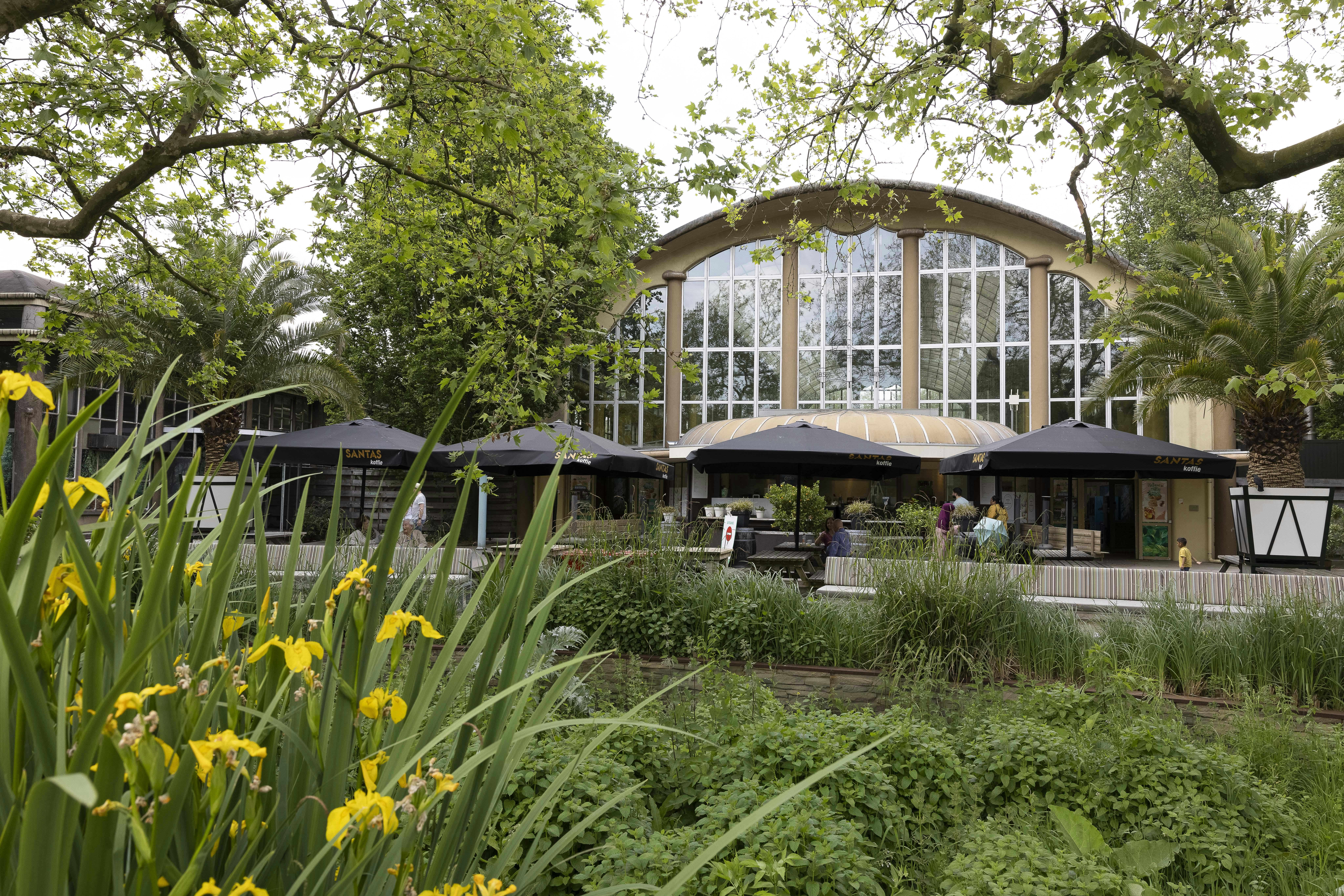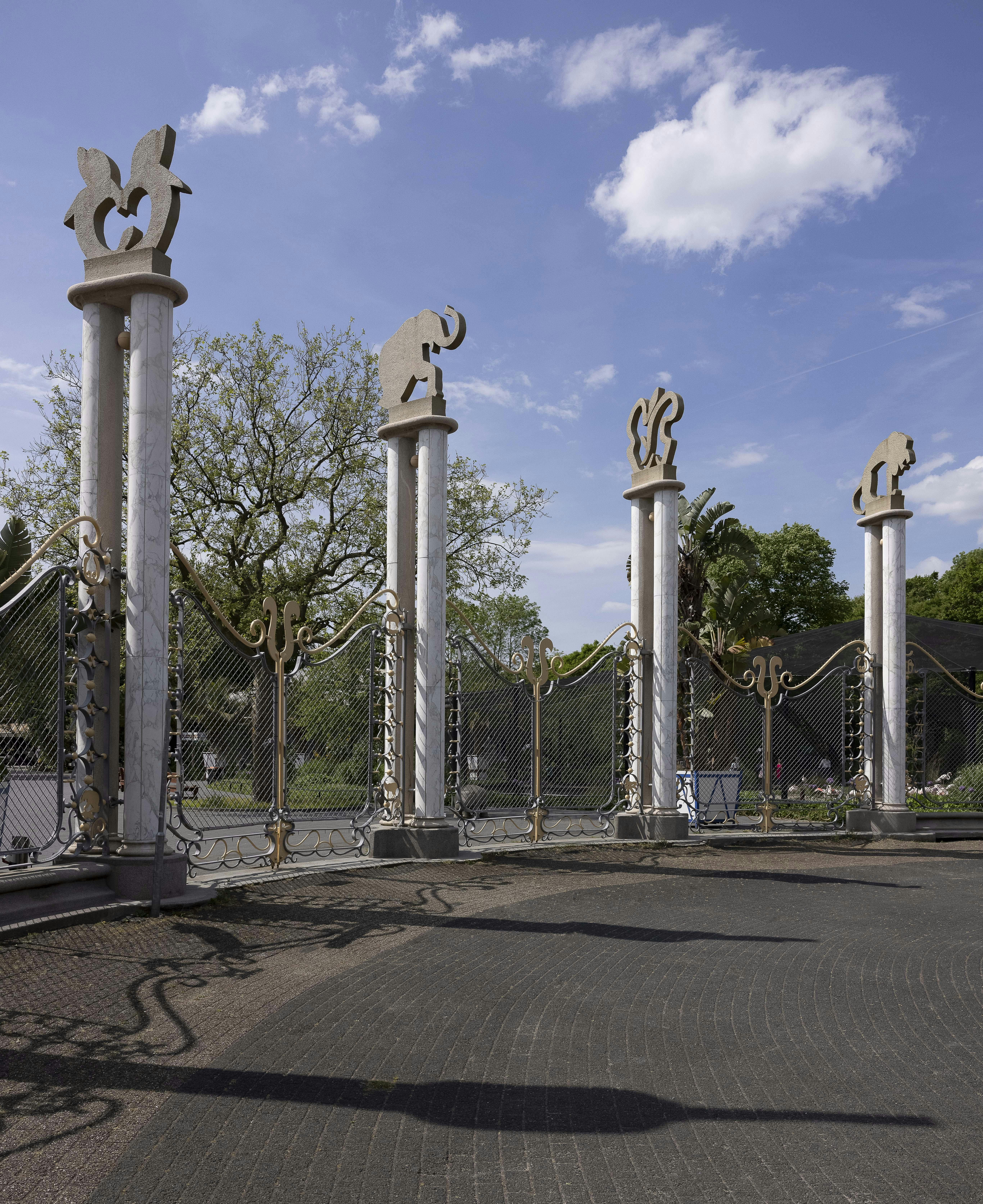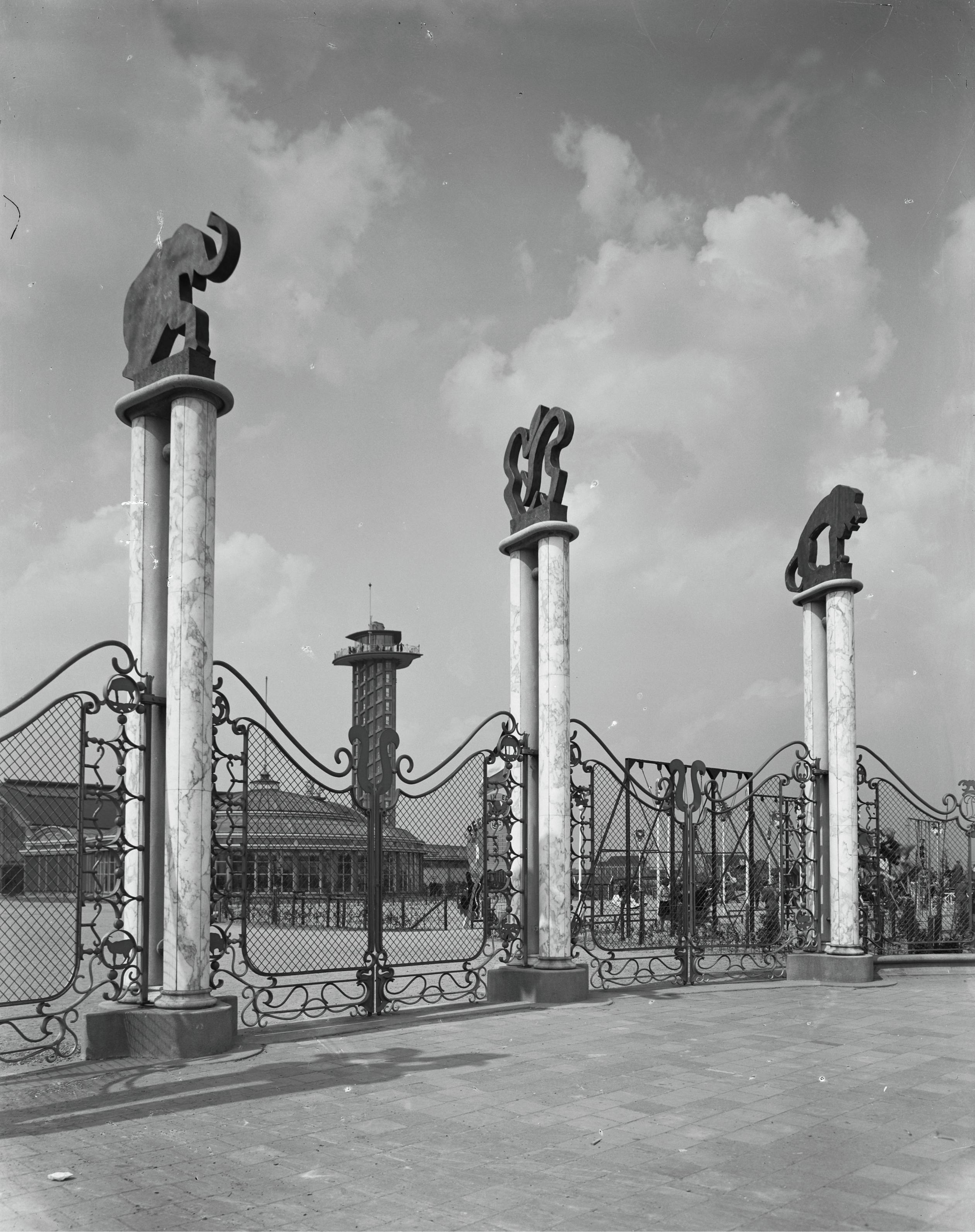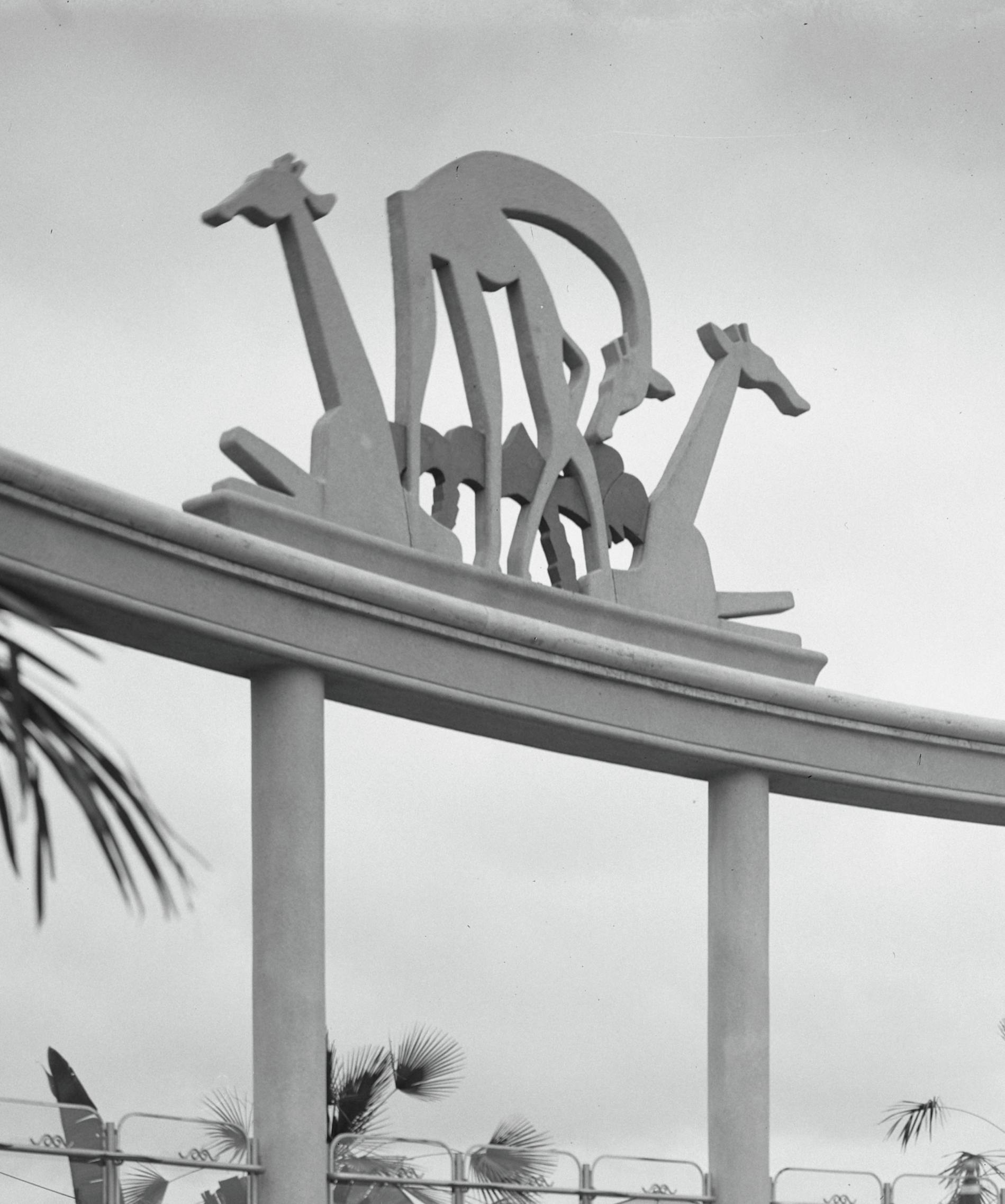Immerse yourself in green and historical Rotterdam at Diergaarde Blijdorp, and learn all about the past, present, and future of the 21 historical treasures.

In June, Rotterdam will celebrate Rotterdam Architecture Month. Therefore, Diergaarde Blijdorp proudly presents the three historical monuments: The Rivièra Hall, the former Giraffe building with Tea room, and the monumental gate at the Van Aarssenlaan. These monuments are an important part of our cultural heritage and tell the story of the relationship between Blijdorp, Rotterdam and its residents.
Experience the architectural splendor and green oases of Blijdorp, and learn more about our strong bond with Rotterdam and its people. Together, we can cherish the past, learn the history, and build a shared future.
Diergaarde Blijdorp is one of the icons of Rotterdam and has served as the backyard for many Rotterdammers for decades. Diergaarde Blijdorp, as it became commonly known in 1940, plays an important role in the lives of Rotterdammers. Many have enjoyed beautiful moments and made valuable memories here. But how did it all begin, and how are the monuments now? And perhaps even more importantly, what is the goal for the future?

Diergaarde Blijdorp, designed by architect Sybold van Ravesteyn in 1938, is an iconic part of Rotterdam. The park uniquely combines architecture and nature, with striking buildings for animals and large meadows where various species lived together. The Rivièra Hall, large pond, and lookout tower formed the heart of the park. Classic urban design elements such as squares, boulevards, and greenery created a harmonious and graceful environment.
During the post-World War II reconstruction, Blijdorp served as an important meeting place for Rotterdammers, a place to escape the destroyed city. Over the years, Blijdorp has become an indispensable attraction for the city and the region. The monumental buildings and rich history give Blijdorp its unique cultural and historical value.
Blijdorp boasts no less than 21 national monuments, including the Rivièra Hall, the Bear Theater, the Giraffe Building with Tea Room, and various animal enclosures. These monuments reflect Van Ravesteyn's original vision and still provide a magical setting for encounters with the animals. The architecture, planting, and layout of the outdoor spaces have a unique coherence, making Blijdorp one of the most valuable examples of a traditional European city zoo.

Today, Blijdorp is much more than a historical zoo. The original park layout has been transformed into a biotope model, where animals are placed in a natural environment. This model has further evolved into impact areas that not only improve animal welfare but also contribute to nature conservation and restoration. Visitors can enjoy various themes and atmospheres, such as the African savannah and Asian biotopes, while the historical elements of Van Ravesteyn are still recognizable. A large part has been restored in recent years and work is still ongoing. For example, preparations have been started for the restoration of the Victoria Serre (part of the Rivièra Hall) and the restoration of the wild reindeer stable is in full swing.

Diergaarde Blijdorp's vision for the 21 historical monuments is based on the Master Plan 2050 ‘Experience, Protect, Blijdorp’.
By 2030, Blijdorp aims to restore all 21 national monuments, including the iconic Rivièra Hall. Additionally, a quality standard and a Maintenance and Management Plan will be developed to keep the monuments in good condition and preserve their historical value.
To enhance the spatial quality and coherence of the park, Blijdorp is developing an image quality plan and a spatial plan. These plans ensure that historical elements are integrated with modern biotopes and impact areas, creating a harmonious and educational environment.
Blijdorp wants to become the meeting place of Rotterdam. With its 34 hectares of greenery, it is a unique oasis of peace in an ever-growing city. Its unique national monuments and its shared history with the city form a common ground. The restoration and repurposing of the Rivièrahal offers an excellent opportunity to add a new function to the zoo for the neighbourhood and the city. For events, congresses and catering, as it was once intended. Even without having to buy a zoo ticket first.
With this ambition we create a future in which animal welfare, education, cultural history and sustainability go hand in hand. This makes Blijdorp not only an important player in nature conservation, a central meeting place for Rotterdam and its residents and a source of inspiration for many.
Six iconic buildings and places in Diergaarde Blijdorp, each with a rich history.
The Rivièrahal is the main building and centerpiece of Sybold van Ravesteyn's design at the Diergaarde Blijdorp / Rotterdam Zoo. After its completion in 1940, the Rivièrahal was for a long time the bustling heart of Rotterdam. It was used for all kinds of events, from fashion shows to concerts, from boxing matches to exhibitions. It was a place where the city and the zoo met.
Now the Rivièra Hall is being restored and will regain its old function as a meeting place. This is being done in three phases: we are starting with the Victoria Serre and the underlying greenhouse. It will remain a botanical destination. Diergaarde Blijdorp is also a fully certified botanical garden. The Victoria Serre with the underlying greenhouse will be filled entirely with this function. The central hall will then be tackled and repurposed into a rentable space for events and companies, and finally, the ape/pachyderm wing will be developed into an educational space with break-out rooms and a public catering facility.
The renewed Rivièra Hall must become one of Rotterdam's vibrant and green places. Here our stories, our heritage, and our ambitions are united, and the bond with the city is strengthened.

Come and visit Rotterdam Zoo on September 14 or 15 during Open Monumentendag (Open monument day). You can book tickets for the activities via Open Monumentendag.




